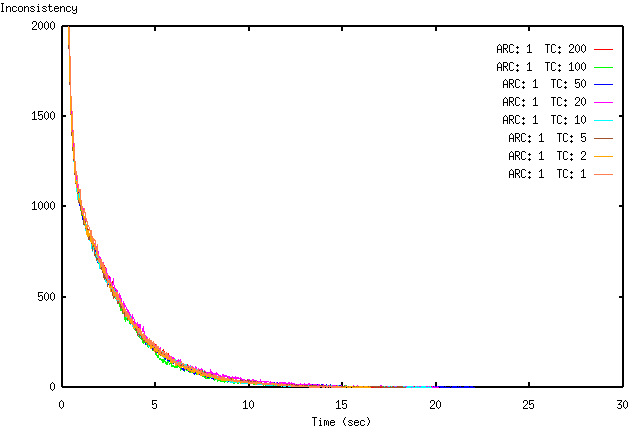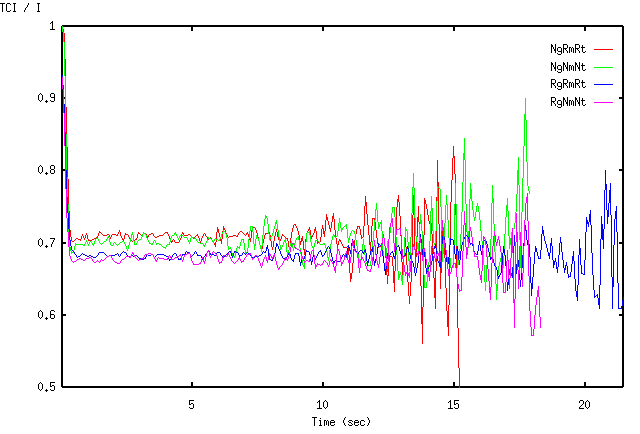
| EXCALIBUR Adaptive Constraint-Based Agents in Artificial Environments |
| [JOB-SHOP] | [Realization] [Results] [Constraint Weights] |
| [ Please note: The project has been discontinued as of May 31, 2005 and is superseded by the projects of the ii Labs. There won't be further updates to these pages. ] |
(Related publications: [PUBLink] [PUBLink])
The weights of the constraints' subjective costs for the overall cost function have so far been set to one. Looking at the individual constraints' cost development for a test run (see figure below) may give the impression that this is not the best choice. Better weightings could restructure the search space and ensure that the inconsistency of possibly more critical constraints plays a more important role and that these constraints are chosen more often to execute improvement changes.

The following figures show that this is not the case. The weights for the ARC and TC constraints' costs are given after the colons. A stronger weighting of the ARCs has a negative effect, whereas higher weights for the TCs neither worsen nor improve the search behavior.


The quota of iterations with task constraint selections to all iterations is shown in the figure below. NgRmRt, NgNmNt, RgNmNt and RgRmRt are test-run variants in about decreasing quality order (see following section). The high beginning rates are because of the very disorder of the randomly distributed tasks. The high variation toward the end is because of less involved data, as most of the test runs have already finished. The higher the quality of the test runs, the higher is also the quota of iterations with task constraint selections. This underpins the assumption that a higher repair rate of the ARCs does not improve the search behavior.

| [JOB-SHOP] | [Realization] [Results] [Constraint Weights] |
For questions, comments or suggestions, please contact us.
Last update:
May 19, 2001 by Alexander Nareyek